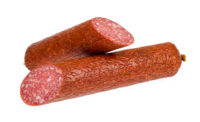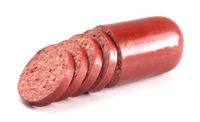Consumers develop expectations about the quality of a meat product long before they eat it based on quality cues available to them at retail level. Intrinsic quality cues include color, marbling and, to a lesser extent, the amount of moisture in the product. But upon eating, consumers relate pork quality to tenderness, intramuscular fat and how well done they cook their pork.
One of the most important goals of the pork industry is to create products that are profitable for the packer, processor and retailer while satisfying consumer demands. Traditional enhancement solutions may include different types of phosphates, salts, lactates and other ingredients to increase the moisture, sensory attributes and consumer acceptability of whole-muscle meat products. Even though consumers buy enhanced pork products, they are increasingly concerned with ingredients such as phosphate and salt. Therefore, clean-label alternative ingredients that function similarly to traditional enhancement solutions are of value to both the pork industry and consumers.
The objectives of this research were to evaluate alkaline electrolyzed reduced water as a potential clean-label alternative to industry standard enhancement solutions for moisture retention, eating quality and shelf-life properties. Alkaline electrolyzed reduced water is a product from the electrolysis of a dilute salt solution passed through an electrical current. When sodium chloride is used as the salt, this process creates two phases of water: electrically oxidized water with pH of approximately 2.5 as a dilute hydrochloride solution, and pH of approximately 11.0 as a dilute sodium hydroxide solution.
Due to the elevated pH, it was believed that an injection of electrically reduced water could elevate the pH of the meat system and subsequently allow for water to bind.
Sixty-four whole pork loins were enhanced with one of four solutions to evaluate the use of alkaline electrolyzed water as a replacement for traditional enhancement solutions. Treatment solutions included alkaline electrolyzed reduced water (EOH; pH≈11.76), EOH plus 2.5 percent potassium-lactate (EOK; pH≈10.92), industry standard (IS; 0.35 percent sodium tripolyphosphate, 0.14 percent sodium chloride, 2.5 percent potassium-lactate; pH≈6.78), and no enhancement (CON).
After enhancement to a target of 110 percent of green weight and a rest period, chops were cut to test treatment effects on water holding capacity, tenderness, sensory attributes, shelf life, color and lipid oxidation. Water holding capacity was measured using four methods, sequentially applying more pressure with each method.
The first method was free drip, which is the moisture lost from the chop as it hangs from a hook. During this stage of moisture loss, EOH treated chops lost the greatest amount of water followed by EOK, while IS and CON lost the least.
The second method was the moisture lost to vacuum packaging, where EOH continued to lose the greatest amount of water, while IS treated chops retained more water than all other treatments.
The third method used was centrifugation, where EOK and CON chops lost the most water followed by EOH chops, then IS treated chops.
Finally, the last method used to measure all of the remaining water in the chops was drying. During this method, IS treated chops lost the most water on a percent basis, indicating that IS-treated chops had the highest moisture retention of all treatments, followed by EOK and CON, then EOH which lost the least.
The use of alkaline electrolyzed reduced water did not improve tenderness or sensory characteristics compared to IS treated chops. Alkaline electrolyzed water chops were less red and were more brown in color than IS chops across all days of shelf-life display. Subjective color panelists rated the average color of EOH chops as brighter purplish-pink and having less darkening from muscle discoloration than both IS and CON. Alkaline electrolyzed water enhanced chops exhibited greater lipid oxidation than all other treatments.
As a standalone enhancement solution, alkaline electrolyzed reduced water was not a suitable replacement compared to industry standard solutions. NP





Report Abusive Comment